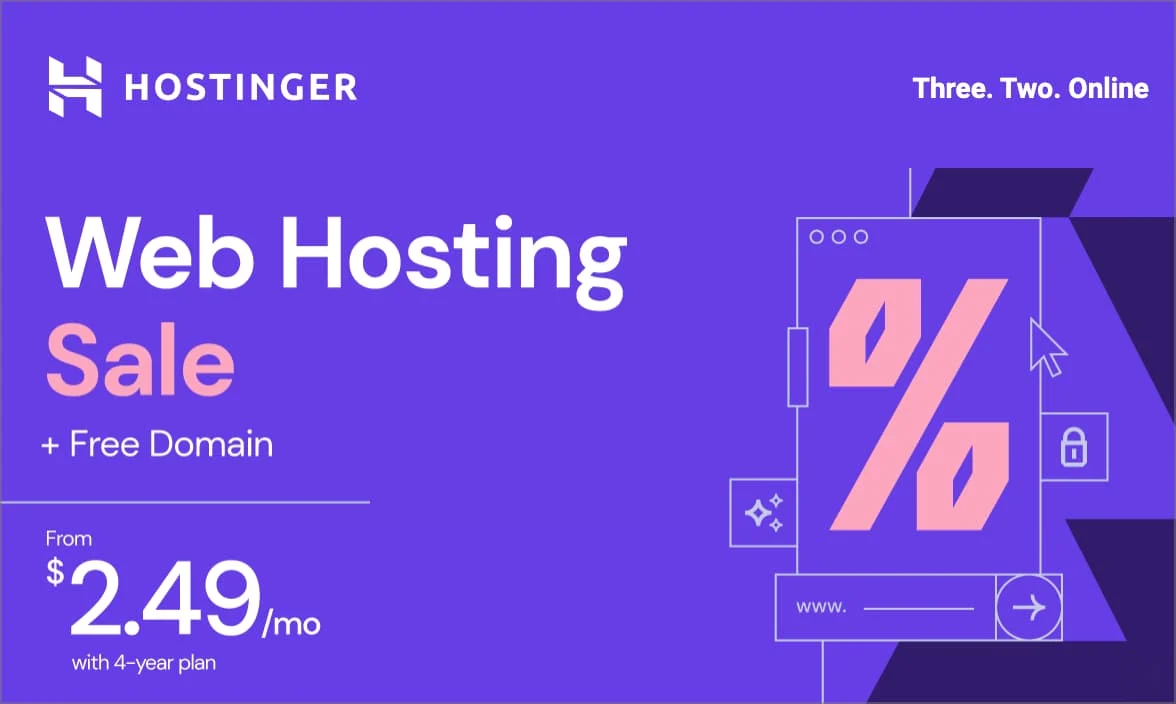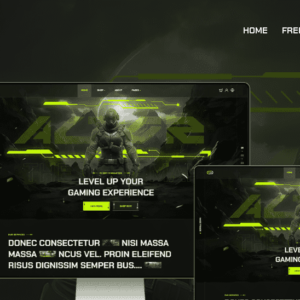
Freelance Web Developer Success: Find Jobs, Clients, & Passive Income
Freelance Web Developer Success
Introduction
In the digital age, freelance web development offers incredible freedom and earning potential. “Freelance Web Developer Success” is your roadmap to navigating this dynamic landscape. Discover proven strategies for landing high-paying gigs, attracting loyal clients, and building passive income streams that free you from the 9-to-5 grind. Whether you’re a coding newcomer or a seasoned pro, this guide equips you with essential skills in 2024.

Table of Contents
Building Your Freelance Foundation
Essential Skills for Thriving in the Web Development World
(A Guide for Web Developers & Designers)
Web development is a dynamic field with lucrative opportunities for those who possess the right blend of technical and soft skills. Whether you’re aiming to join a web development company, freelance as a web designer, or even set your web developer rates, understanding these core competencies is crucial.
Technical Prowess: The Foundation of Web Development
Web developer and web designer roles often demand a strong grasp of technical skills. These are the tools you’ll use to bring websites and web applications to life:
- HTML (Hypertext Markup Language): The backbone of any web page, providing structure and content.
- CSS (Cascading Style Sheets): The magic that makes websites visually appealing, handling layout and appearance.
- JavaScript: The language that adds interactivity and dynamic elements to websites.
- Frameworks (e.g., React, Angular, Vue): These pre-built collections of code streamline development and boost efficiency.
Pro Tip: Keeping up with the latest frameworks can enhance your web developer rates and appeal to potential clients.
Soft Skills: The Secret Sauce for Web Development Success
Technical skills are essential but don’t underestimate the power of soft skills. These are the interpersonal abilities that make you a valuable asset to any web development company or freelance project:
- Communication: Conveying ideas, understanding client needs, and collaborating with team members is key.
- Project Management: Breaking down complex projects into manageable tasks, setting timelines, and meeting deadlines are vital for success.
- Time Management: Effectively organizing your work, prioritizing tasks, and avoiding procrastination ensures projects stay on track.
Did You Know: Strong soft skills can significantly impact your earning potential as a web designer.
How to Make Money as a Web Designer/Developer
With the right skills, there are numerous avenues to generate income:
- Freelancing: Set your web design freelance rates and work on diverse projects for various clients.
- Join a Web Development Company: Work as part of a team and earn a web designer salary while gaining valuable experience.
- Build and Sell Websites: Create websites for clients or develop your niche websites to monetize.
- Offer Consulting Services: Share your expertise and advise businesses on their web presence.
Remember: Your ability to market yourself and demonstrate your skills is crucial for securing high-paying clients and projects.
How to Become a Web Developer: Your Path to Success
If you’re passionate about technology and creativity, here’s a roadmap to kickstart your web development journey:
- Learn the Fundamentals: Master HTML, CSS, and JavaScript through online courses, tutorials, or boot camps.
- Choose a Specialization: Decide whether you want to focus on front-end development, back-end development, or become a full-stack developer.
- Build a Portfolio: Create your projects or contribute to open-source initiatives to showcase your skills.
- Network and Collaborate: Connect with other web developers, attend industry events, and seek mentorship opportunities.
- Keep Learning: The web development landscape is constantly evolving, so stay updated with new technologies and trends.
Portfolio Power: Your Key to Success in the Web Development World
A powerful portfolio is essential for anyone seeking a career in web development, whether you’re aiming to join a top web development company, command top web designer salary rates, or thrive as a freelance web designer. This guide explores why a portfolio is so crucial, provides tips for building impressive projects, and teaches you how to showcase your skills effectively.

Why Your Portfolio Is Your Most Powerful Asset
In the competitive field of web development, your portfolio is your resume, your storefront, and your proof of expertise. It’s what potential employers or clients use to gauge your:
- Skills and Expertise: A portfolio demonstrates your proficiency in various web technologies, design principles, and problem-solving abilities. It shows whether you’re a specialist or a versatile web developer.
- Creativity and Style: Your portfolio reflects your unique design aesthetic and your ability to bring ideas to life. This is particularly important if you’re interested in specializing in web design.
- Experience and Track Record: By showcasing past projects, you demonstrate your ability to deliver real-world solutions. This builds trust and credibility, especially important for setting your web developer rates or web design freelance rates.
Building a Portfolio That Wows
Personal Website: Your Digital Home
Your website is your most important portfolio piece. It should showcase your best work, highlight your skills, and provide a platform for potential employers or clients to contact you. Consider these tips:
- Design and Branding: Invest time in creating a visually appealing and well-structured website that reflects your personality and style.
- Content: Include a clear “About Me” section, a well-organized portfolio gallery, and contact information.
- Technical Skills: Make sure your website is responsive, loads quickly, and follows best practices in web development.
Contribute to Open Source: Gain Experience and Exposure
Contributing to open-source projects is a great way to build your skills, collaborate with other developers, and gain real-world experience. Many web development companies value contributions to open source as it demonstrates initiative and a commitment to learning.
Create Your Projects: Unleash Your Creativity
Don’t be afraid to create your passion projects. These can be anything from small interactive websites to full-fledged applications. Personal projects allow you to experiment with new technologies, solve unique challenges, and demonstrate your initiative to potential employers or clients.
Showcasing Your Work Effectively
Clear and Concise Project Descriptions
For each project in your portfolio, include a brief description that outlines:
- The Problem: What was the challenge you were trying to solve?
- Your Role: What specific tasks did you handle? Did you work solo or as part of a team?
- The Solution: What technologies and techniques did you use?
- The Outcome: What were the results of your work? (e.g., increased website traffic, improved user experience)
High-Quality Visuals
Use high-resolution images and videos to showcase your work. If possible, include screenshots or screen recordings that demonstrate the functionality and user experience of your projects.
Social Proof
If you have client testimonials or positive feedback, include them in your portfolio. This adds credibility and reinforces your expertise.
Making Money as a Web Developer: Your Portfolio is Your Ticket
Whether you dream of landing a lucrative job at a web development company or setting your web design freelance rates, your portfolio is the key to unlocking financial success in the web development world. Invest time and effort in building a portfolio that showcases your skills, creativity, and passion for web development.
Branding Yourself: Your Online Presence is Your Resume
In the digital age, your online presence isn’t just about socializing – it’s your professional portfolio, your virtual handshake, and the first impression you make on potential clients, employers, or collaborators.
Crafting a Compelling Personal Brand
A strong personal brand is the story you tell about yourself, your skills, and your value proposition. Here’s how to shape it:
- Know Your Niche: Are you a freelance web designer looking for project-based work? Or a seasoned web developer seeking a full-time position with a higher web developer salary? Your brand should reflect your specific goals.
- Define Your Unique Value: What sets you apart? Maybe you specialize in creating lightning-fast websites optimized for conversions. Highlight this unique selling point in your online profiles.
- Consistency is Key: Ensure your brand message is consistent across all platforms. Use a professional headshot, a well-crafted bio, and a cohesive visual style (color scheme, fonts, etc.).
Building Your Online Hub: Your Website
For web designers and web developers, a personal website is non-negotiable. It’s your digital showcase:
- Professional Design: Your website should exemplify your design skills. It should be visually appealing, user-friendly, and responsive on different devices.
- Portfolio: Showcase your best projects. Include case studies that detail the challenges, solutions, and results you achieved. Use keywords like web design freelance rates and web developer rates to attract clients seeking those services.
- About Me: Share your story, your passion for web design/development, and your approach to work. This helps potential clients or employers connect with you on a personal level.
- Blog: Share your expertise through informative blog posts. Topics like “How to Make Money as a Web Designer” or “How to Become a Web Developer” can attract aspiring professionals and establish you as an authority in the field.
- Contact: Make it easy for people to reach you. Include a contact form and links to your LinkedIn profile and other relevant social media.

LinkedIn: Your Professional Network
LinkedIn is the go-to platform for professional networking. Optimize your profile to attract opportunities:
- Keywords are Crucial: Use relevant keywords throughout your profile: web designer, web developer, web development company, etc. This helps recruiters and potential clients find you.
- Experience and Skills: Detail your work experience, highlighting your accomplishments using quantifiable results. List your technical skills (e.g., HTML, CSS, JavaScript) and any relevant certifications.
- Recommendations: Seek recommendations from past clients or colleagues to validate your expertise.
- Engage: Share articles relevant to web design/development, participate in industry discussions, and connect with other professionals in your field.
Bonus Tips:
- Stay Updated: Web technologies evolve rapidly. Continuously learn and showcase your knowledge of the latest trends.
- Build Relationships: Network online and offline. Attend industry events, connect with other web professionals on social media, and seek out mentorship opportunities.
- Give Back: Contribute to open-source projects, share your knowledge through tutorials or workshops, or offer pro bono work for a cause you care about.
By building a strong personal brand and leveraging the power of your website and LinkedIn, you’ll position yourself as a sought-after web designer or web developer, opening doors to lucrative projects and career advancement.
Finding Freelance Web Development Gigs
How to Find Web Development & Design Clients: A Comprehensive Guide
Landing your first client (or your next big project) is often the toughest part of freelancing or starting a web development company. Here are several proven strategies to help you find the right opportunities:
Job Boards & Platforms: Your Gateway to Web Development Projects
General Freelance Platforms
- Upwork: A massive marketplace for all types of freelance work, including web development, design, and related tasks.
- Fiverr: Known for smaller, fixed-price projects (“gigs”). Great for starting and building your portfolio.
- Freelancer: Similar to Upwork, with a vast range of projects. Competitive bidding is common.
- Guru: Another platform with various categories, including web development.
Specialized Platforms
- Toptal: Exclusive network for top-tier talent. The rigorous screening process, but access to high-quality clients and projects.
- Codementor: Connects developers with projects and mentorship opportunities. Great for skill development.
- Niche Platforms: Explore platforms focused on specific industries (e.g., healthcare, e-commerce) or technologies (e.g., WordPress, React).
Direct Outreach: Taking the Initiative to Find Web Design Clients
Networking & Prospecting
- LinkedIn: Connect with potential clients, join groups, and showcase your expertise.
- Networking Events: Attend industry events (online or in-person) to meet people and build relationships.
- Referrals: Ask your network for introductions to companies in need of web development or design services.
Cold Outreach
- Email: Craft personalized emails to companies highlighting your skills and how you can help them.
- Portfolio Website: Make sure your website showcases your best work and communicates your value proposition.
Referrals & Word-of-Mouth: The Power of Recommendations
- Happy Clients: The best way to get referrals is to do excellent work and exceed expectations.
- Referral Network: Actively build relationships with other professionals (designers, marketers, etc.) who may refer clients to you.
Building Your Website: Your Online Portfolio & Lead Generation Tool
- Showcase Your Expertise: Feature case studies, testimonials, and a clear explanation of the services you offer.
- SEO: Optimize your website for relevant keywords to attract organic traffic from potential clients searching for web development services.
- Blogging: Share your knowledge and insights to establish yourself as an authority in your field.
Important Note:
- Tailor Your Approach: Different strategies work better for different people. Experiment and find what works best for you.
- Perseverance is Key: Finding clients takes time and effort. Don’t get discouraged if you don’t see results immediately.
- Value Your Skills: Don’t undersell yourself. Charge rates that reflect your experience and expertise.
Working with Clients
Mastering Client Communication in Web Design & Development
Client communication is the cornerstone of successful web design and development projects. Whether you’re a freelancer or part of a web development company, clear communication builds trust, ensures project success, and can even boost your web designer’s salary potential.
Setting Clear Expectations (Keyword: Web Design Freelance Rates)
Before diving into a project, it’s crucial to set clear expectations with your client. Discuss the project scope, timeline, deliverables, and web design freelance rates upfront. This helps avoid misunderstandings later and ensures that you and the client are on the same page from the start.
- Scope: Define the project’s specific goals and objectives. What are the client’s needs? What kind of website do they want to build?
- Timeline: Create a detailed project timeline with deadlines for each phase of the project. This keeps the project on track and prevents delays.
- Deliverables: Outline what exactly you will deliver to the client. This might include website design mockups, a functional website, or ongoing website maintenance services.
- Web Design Freelance Rates: Communicate your pricing structure. Will you charge an hourly rate or a fixed project fee? Consider offering package deals for various web developer rates.
Regular Updates and Feedback Loops (Keyword: Web Developer Rates)
Keep your client informed of the project’s progress with regular updates. Share design mockups, and development milestones, and seek feedback at each stage. This open communication fosters collaboration and ensures that the final product aligns with the client’s vision.
- Schedule Regular Meetings: Have regular check-ins with your client to discuss the project’s progress and address any concerns.
- Provide Visual Updates: Share design mockups, wireframes, and prototypes to give your client a visual representation of the website.
- Request Feedback: Actively seek feedback from your client. Ask for their thoughts and suggestions on design, functionality, and user experience. This helps you tailor the website to their needs.
Managing Difficult Situations (Keyword: How to Make Money as a Web Designer)
Even with the best communication, challenges can arise. Clients may change their minds, request additional features, or have unrealistic expectations. Knowing how to handle these situations professionally is crucial for how to make money as a web designer in the long run.
- Listen Actively: Listen to your client’s concerns without interrupting. Try to understand their perspective.
- Offer Solutions: Propose solutions to address their concerns. Be transparent about the impact on the project timeline and web developer rates.
- Compromise: Be willing to compromise. Find a middle ground that satisfies both your client’s needs and your professional standards.
- Escalate if Necessary: If you’re unable to resolve the issue, escalate it to a senior team member or project manager.
Contracts and Pricing in Web Design & Development
Clear contracts and fair pricing are essential for protecting yourself as a web designer or web developer. They outline project details, and payment terms, and prevent disputes down the line.
Importance of Written Agreements (Keyword: Web Development Company)
Always have a written agreement in place before starting any project. A contract ensures that both parties understand the project’s scope, timeline, and payment terms. It protects both the client and the web development company or freelancer.
- Key Elements: Your contract should include:
- Project Scope: A detailed description of the project’s goals and objectives.
- Timeline: Deadlines for each phase of the project.
- Payment Terms: A breakdown of your fees and payment schedule.
- Revisions: The number of revisions included in the project scope.
- Intellectual Property: Who owns the rights to the website design and code?
- Termination Clause: The conditions under which either party can terminate the contract.
Setting Fair Rates (Hourly vs. Project-Based) (Keywords: How to Become a Web Developer, Web Developer Rates)
Setting fair rates is essential for both attracting clients and earning a decent living as a web designer or web developer. You have two main pricing options:
- Hourly Rate: Charging an hourly rate allows you to bill for your time. This is suitable for projects with evolving requirements. Be sure to track your hours accurately.
- Project-Based Fee: A fixed project fee provides clients with a clear understanding of the total cost. This works well for projects with well-defined scopes.
When setting your rates, consider your experience, the complexity of the project, and the web developer rates in your region. Research what other designers and developers charge to ensure your rates are competitive.
Payment Terms and Milestones (Keyword: Web Designer Salary)
Define clear payment terms in your contract. This ensures that you get paid on time for your work. Consider using milestones to break down payments into smaller increments.
- Deposit: Request a deposit upfront to secure your commitment to the project.
- Milestones: Set payment milestones tied to specific project deliverables, such as design approval or website launch.
- Final Payment: The final payment is due upon project completion and client acceptance.
Delivering Exceptional Results in Web Design & Development
Going above and beyond for your clients is a surefire way to build a successful career in web design and development.
Going Above and Beyond for Clients (Keywords: How to Make Money as a Web Designer, Web Designer Salary)
Exceeding client expectations can lead to repeat business, referrals, and a higher web designer salary.
- Deliver on Time and Within Budget: Meet project deadlines and stay within the agreed-upon budget.
- Provide Excellent Customer Service: Be responsive to your client’s inquiries and requests. Offer support even after the project is complete.
- Offer Additional Services: Consider offering additional services like website maintenance, SEO optimization, or content creation. This can boost your income and make you more valuable to your clients.
Building Long-Term Relationships (Keywords: Web Development Company)
Focus on building long-term relationships with your clients. Satisfied clients are more likely to return for future projects, recommend you to others, and contribute to your success as a web development company or freelance designer.
- Stay Connected: Keep in touch with your clients even after the project is complete. Send them holiday greetings, share industry news, or offer special discounts on future services.
- Ask for Referrals: Don’t be afraid to ask your satisfied clients for referrals. This can be a great way to expand your client base.
- Offer Ongoing Support: Provide ongoing website maintenance and support services to keep your client’s websites running smoothly.
By mastering client communication, establishing clear contracts, and delivering exceptional results, you’ll be well on your way to a thriving career in web design and development.
Creating Passive Income Streams
Digital Products: Your Web Development/Design Golden Ticket
The digital landscape is ripe with opportunities for web developers and designers like you. Digital products can be a lucrative way to leverage your existing skills and knowledge, creating additional income streams or even building a full-fledged business.
Themes, Templates, and Plugins: The Cornerstone of Web Design (keyword: web design freelance rates)
If you’re a web designer, you’re likely no stranger to the importance of themes, templates, and plugins. These tools are essential for customizing websites and making the design process more efficient. Creating and selling your high-quality themes, templates, or plugins can be a great way to establish yourself as a reputable freelancer (keyword: web design freelance rates) and earn passive income.
- Theme Marketplaces: Platforms like ThemeForest or Creative Market are excellent venues for showcasing your work to a wide audience of potential buyers.
- Customization Services: Offer customization services for your themes or templates. This allows you to charge web design freelance rates while providing a valuable service to clients.
Courses, Tutorials, and eBooks: Sharing Your Web Development Expertise (keywords: how to become a web developer, web developer rates)
Are you a seasoned web developer? Share your knowledge and experience by creating comprehensive courses, tutorials, or eBooks. There’s a huge demand for educational content in the web development space, and you can capitalize on it by teaching others how to become web developers (keyword: how to become a web developer) themselves.
- Platform Options: Consider platforms like Udemy, Skillshare, or Teachable to host your courses and reach a broader audience.
- Pricing Models: Experiment with different pricing models, such as one-time purchases or subscription-based access. As you build a reputation, you can command higher web developer rates (keyword: web developer rates).
Affiliate Marketing: Promoting Web Development Tools (keywords: how to make money as a web designer)
Affiliate marketing is a great way for web designers and developers to earn commissions by recommending tools and services they already use and love. By partnering with companies that offer web hosting, design software, or other essential tools, you can earn a percentage of each sale made through your unique referral link.
- Niche Targeting: Focus on promoting products and services that align with your niche and resonate with your audience.
- Honest Reviews: Build trust with your audience by providing honest and unbiased reviews of the products you recommend. This is a win-win way to make money as a web designer (keyword: how to make money as a web designer) while helping others.
Membership Sites: Exclusive Content and Recurring Revenue (keywords: web development company)
If you have a wealth of knowledge to share, consider creating a membership site. This exclusive online community provides subscribers with premium content, resources, and support in exchange for a recurring fee. Membership sites are a fantastic way for web development companies (keyword: web development company) to foster a loyal following and generate a predictable income stream.
- Community Building: Create a thriving community where members can connect, ask questions, and learn from each other.
- Tiered Pricing: Offer different membership tiers with varying levels of access and benefits to cater to different budgets and needs.
Important Note: Remember to research your keywords and use them naturally in your content. Don’t overuse them; instead, focus on providing valuable information that will resonate with your target audience.
Let me know if you’d like to explore any of these digital product ideas in more detail. I’m here to help you make the most of your web development and design skills!
Scaling Your Freelance Business
Raising Your Rates: When and How to Increase Your Pricing for Web Design Services
Why Raising Rates is Essential
- Web developer rates naturally increase with experience and expertise.
- Higher rates reflect the value you bring as a skilled web designer.
- Increasing your pricing ensures you’re earning what you’re worth.
- Raising rates can attract higher-quality clients who value your work.
When to Raise Your Rates
- Milestone Achievements: After completing significant projects or hitting specific revenue targets.
- Skill Enhancement: When you’ve gained new skills or certifications that add value to your web development services.
- Market Demand: If demand for your web design work is high, it’s a good time to adjust your pricing.
- Inflation: Regular adjustments help you keep pace with the rising cost of living and doing business.
How to Raise Your Rates
- Gradual Increase: Don’t shock your existing clients. Gradually raise rates for new projects or contract renewals.
- Value-Based Pricing: Base your rates on the value you deliver to clients, not just the time spent.
- Clear Communication: Be transparent with clients about the reasons for the increase and the added value they’ll receive.
- Grandfathering: Consider offering a temporary discount or a phased approach for existing clients to ease the transition.
Hiring Subcontractors: Delegating Tasks and Expanding Capacity for Your Web Development Company
Why Hire Subcontractors
- Scalability: Take on more web development projects without sacrificing quality.
- Expertise: Access specialized skills you may not have in-house.
- Focus: Free up your time to focus on high-level tasks, such as business development and client relationships.
- Cost-Efficiency: Often more cost-effective than hiring full-time employees.
How to Hire Subcontractors
- Clearly Define Tasks: Outline the scope of work, deadlines, and expectations.
- Vet Candidates Thoroughly: Check portfolios, references, and experience in web development.
- Communication is Key: Establish clear communication channels and project management tools.
- Contracts: Ensure you have a written agreement that outlines the terms of the engagement.
Building an Agency: Creating a Team of Freelancers to Boost Your Web Design Freelance Rates
Benefits of Building a Web Design Agency
- Increased Earning Potential: Leverage the skills of multiple web designers to generate more revenue.
- Diversified Services: Offer a broader range of web development services to attract more clients.
- Shared Resources: Pool resources, expertise, and marketing efforts.
- Reduced Risk: Diversification can help mitigate the risks associated with freelancing.
Steps to Building an Agency
- Define Your Niche: Specialize in a specific type of web design or industry to stand out.
- Recruit Top Talent: Find skilled web designers and developers who complement your skills.
- Establish Processes: Develop workflows, project management systems, and communication protocols.
- Build Your Brand: Create a strong brand identity that reflects your agency’s values and expertise.
- Market Your Services: Develop a marketing strategy to attract clients and showcase your team’s capabilities.
By implementing these strategies, you can effectively scale your web development company, increase your web designer salary, and unlock the full potential of your web design freelance rates. Remember, the key is to continuously invest in your skills, build a strong network, and deliver exceptional value to your clients.
Conclusion:
In this exploration of the freelance web design and development landscape, we’ve covered essential ground for both aspiring and seasoned professionals. Let’s recap the key takeaways and set you up for a thriving freelance career.
Key Takeaways for Freelance Web Design & Development
- Web Design and Development Skills: A strong foundation in HTML, CSS, JavaScript, and relevant frameworks is non-negotiable. Continuous learning is key to staying competitive in the ever-evolving world of web technologies.
- Building Your Portfolio: A well-curated portfolio showcasing your best work is your most powerful marketing tool. It’s a testament to your skills and experience, essential for attracting clients.
- Setting Competitive Rates: Researching web developer rates and web design freelance rates is crucial. Your pricing should reflect your expertise and experience while remaining competitive in your target market.
- Finding Clients: Utilize platforms like Upwork and Fiverr, network within web development communities, and leverage social media to connect with potential clients.
- Client Communication: Effective communication is paramount. Clearly define project scope, timelines, and deliverables to ensure a smooth working relationship.
- Financial Management: Track your income and expenses, set aside funds for taxes, and consider establishing a separate bank account for your freelance business.
Fueling Your Freelance Journey: Encouragement & Motivation
Embarking on a freelance career is exciting, but it also comes with challenges. Here’s what you need to remember:
- Perseverance is Key: Don’t be discouraged by initial setbacks. Keep honing your skills, refining your portfolio, and actively seeking out clients.
- Networking Matters: Building relationships within the web development community can open doors to opportunities and collaborations.
- Value Your Worth: Don’t undervalue your skills. As you gain experience and expertise, your web designer salary or rates should reflect that.
- Stay Inspired: Follow industry trends, explore new technologies, and continually challenge yourself to grow as a web professional.
Remember: The world of web development is vast and constantly evolving. Embrace the challenges, seize the opportunities, and never stop learning. Your path to freelance success awaits!
FAQs
What is a Web Development Company?
A web development company is a team of professionals who specialize in building websites and web applications. Their services can range from simple informational sites to complex e-commerce platforms. These companies often employ a mix of web developers, web designers, and project managers.
What Does a Web Developer Do?
A web developer is responsible for the technical aspects of a website. They use coding languages like HTML, CSS, and JavaScript to create the structure and functionality of a site. There are different types of web developers:
Front-End Developers: Focus on the visual aspects and user experience of a website.
Back-End Developers: Handle the behind-the-scenes logic and data processing.
Full-Stack Developers: Have expertise in both front-end and back-end development.
How to Become a Web Developer?
To become a web developer, you typically need:
Education: A bachelor’s degree in computer science or a related field can be helpful, but it’s not always required.
Skills: Learn programming languages like HTML, CSS, JavaScript, and possibly others like PHP, Python, or Ruby.
Experience: Build your portfolio by creating personal projects or contributing to open-source projects.
Certifications (Optional): Consider certifications to demonstrate your expertise.
What is the Average Web Designer’s Salary?
Web designer salaries can vary depending on experience, skills, and location. Entry-level designers can expect a lower salary, while experienced designers with specialized skills can command higher web designer rates.
How to Make Money as a Web Designer?
There are several ways to make money as a web designer:
Freelance: Work independently and set your web design freelance rates.
Full-Time Employment: Join a web development company or an in-house design team.
Start Your Agency: Build a team and offer web design services to clients.
Web Developer Rates: What Can You Expect?
Web developer rates also vary widely. Factors that influence rates include:
Experience: Senior developers command higher rates than junior developers.
Skills: Specialized skills like mobile app development or e-commerce expertise can lead to higher rates.
Location: Rates can differ significantly based on the cost of living in a particular region.
Project Type: The complexity and scope of a project will affect the overall cost.
How to Choose a Web Development Company?
When selecting a web development company, consider the following:
Portfolio: Review their past work to assess their style and capabilities.
Experience: Choose a company with experience in your industry or niche.
Communication: Ensure they are responsive and communicative throughout the project.
Pricing: Get detailed quotes and compare them with other companies.
I need Services with …
- Wordpress Service
- Shopify Service
- Youtube Service
- Cv and resume Service
- Linkedin Service
Latest Post
-
Top Daily Taste WordPress Theme: Best Choice for Your Site
$ 15Original price was: $ 15.$ 13Current price is: $ 13. Add to cartAdd to WishlistAdd to Wishlist -

Get Hostinger’s Low-Cost Hosting Now!
Don’t miss out on affordable hosting with Hostinger – click now to bring your website online at an unbeatable price!










